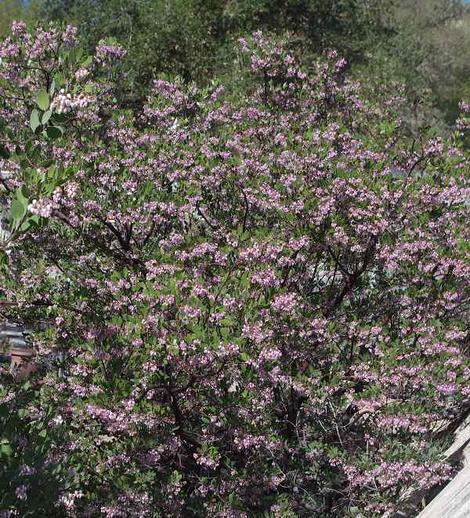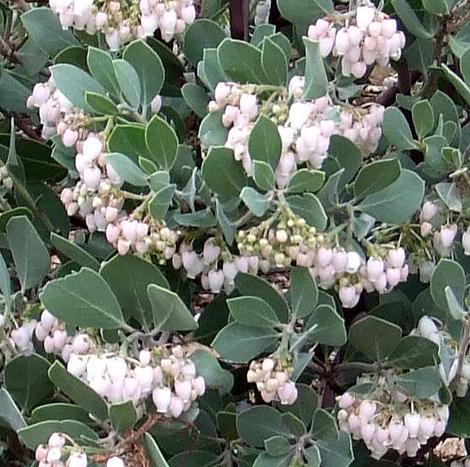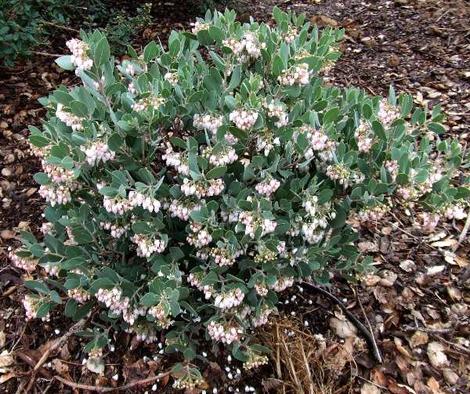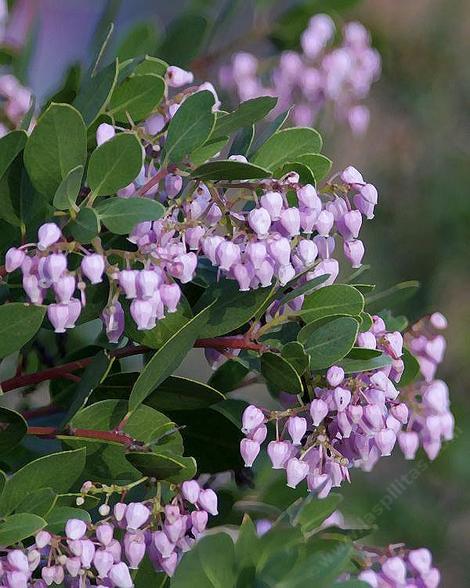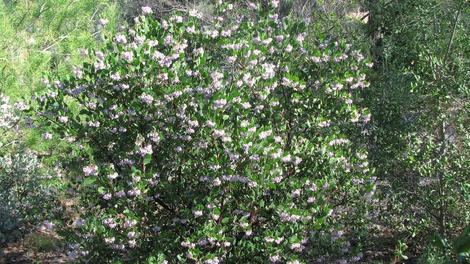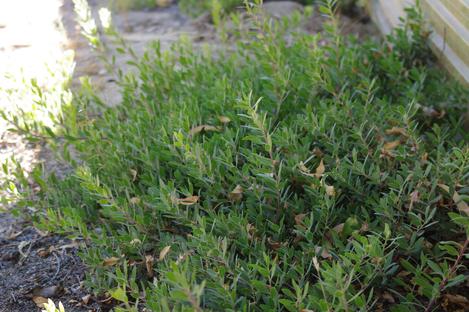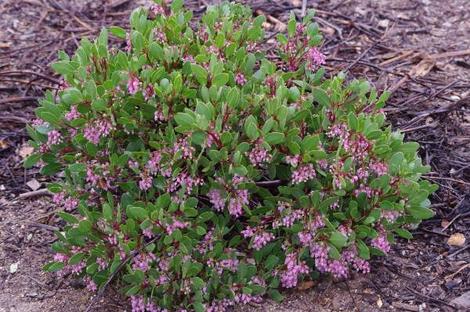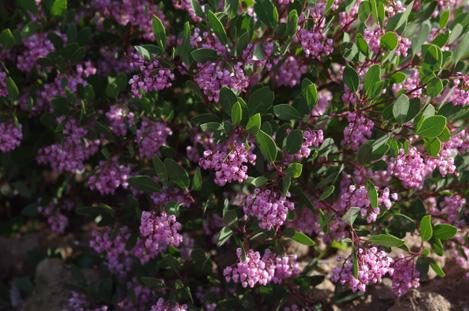Manzanitas of California, (Arctostaphylos species)
You can grow a manzanita if you live in the Western United States. Manzanita is the common name for the genus Arctostaphylos. There are more than forty species of Arctostaphylos in California not to mention all the, cultivars, subspecies and hybrids. We are commonly growing 70 different types in the nursery. Manzanita species grow from two inches (some of the coastal species) to twenty feet tall (many interior species). Manzanitas are popular for their shiny red or mahogany colored bark. Manzanitas have urn-shaped flowers that vary from pink to white and are popular with hummingbirds. They are very drought tolerant and evergreen, always looking green and healthy even in the hottest, driest part of the summer. Manzanita (Arctostaphylos spp) is of the family Ericaceae. Plants in this family are highly mycorrhizal (associated with symbiotic fungi). This allows them to survive in many harsh environments; however, it also makes them very susceptible to over watering and fertilizing. They really do not like to be summer watered nor fertilized. If grown correctly these plants, especially the larger forms, will grow for more than 100 years.
Manzanitas are
easy in most of California and missing from most landscapes.
Let's see, they like to be washed off once a week, they hate drip and fertilizer, and look good for decades. Sounds like my bio.
The only
problem areas are the desert areas(use Arctostaphylos
pungens or Arctostaphylos
glauca) and the areas of beach sand or adobe clay.
The sandy
areas need to use the sand lovers, the clay areas the clay lovers.
Manzanitas are great wildlife plants. Providing nectar for butterflies,
hummingbirdsand
native insects (they're cool!). Many of the manzanitas regulate their
nectar to attract different insects, butterflies and hummingbirds
during the day. See Arctostaphylos otayensis, Otay Manzanita for more.
Use manzanitas to replace plants like Rhaphiolepis (Arctostaphylos
'Howard McMinn'), Privet (Arctostaphylos
'Mama Bear'), Honeysuckle as a ground cover and
Lantana (Arctostaphylos
franciscana), Ivy, (Arctostaphylos
'Wayside' ) Escallonia, (Arctostaphylos
'Howard McMinn' or 'Seninel'
), Abelia (Arctostaphylos
'Sonoma') to name a few.
Mix with Ceanothus
and monkey
flowers
for more color!

Manzanita Hybrids
Many of these hybrids are similar to one of the parents but have more flowers or are more tolerant of humans.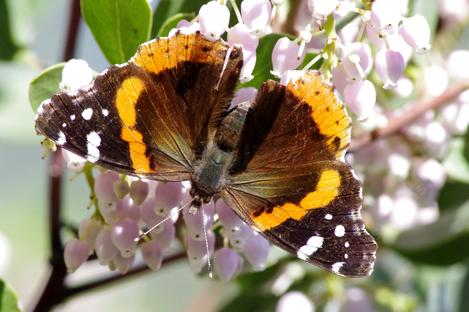
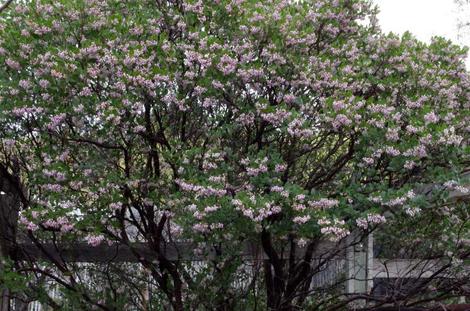
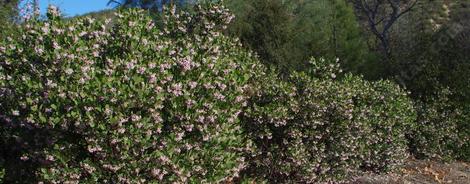
Baby Bear Manzanita starts out slow and then explodes in a tangle of red, green, purple and pink. With life all over it.
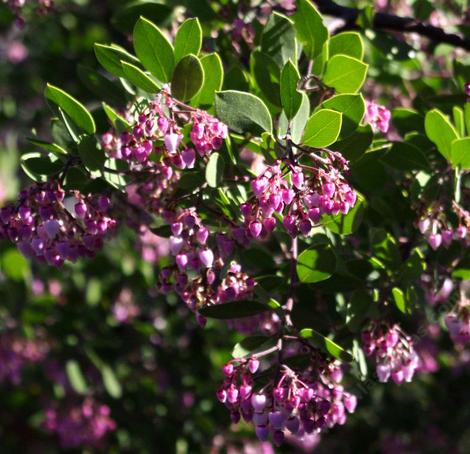
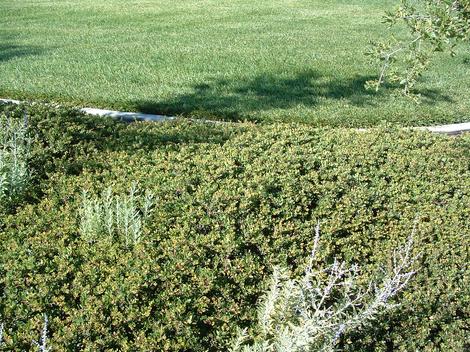
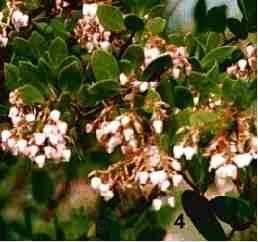
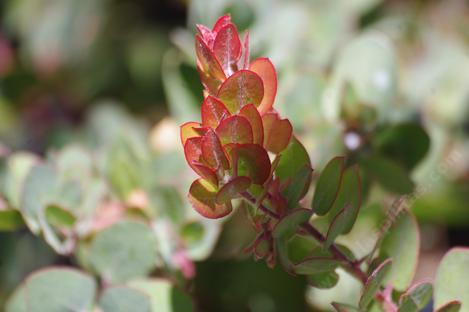
Arctostaphylos Ian Bush Manzanita has a good flower show that the Hummingbirds, pollinators and butterflies. like it.
Manzanita plants are beautiful! They look good all year and most need little water and care in coastal California. In Interior California they'll need some extra winter water. Most of the shrub manzanitas do fine in the interior valleys.

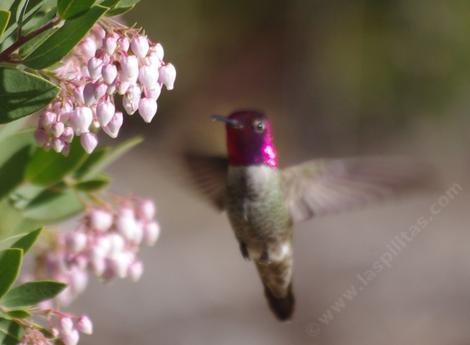
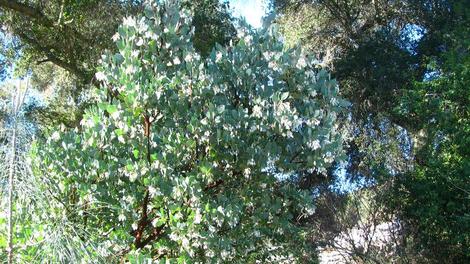
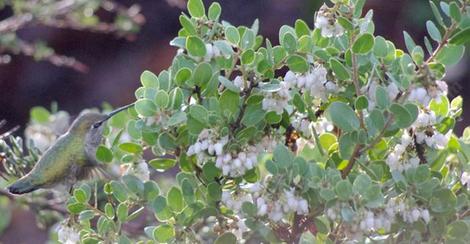
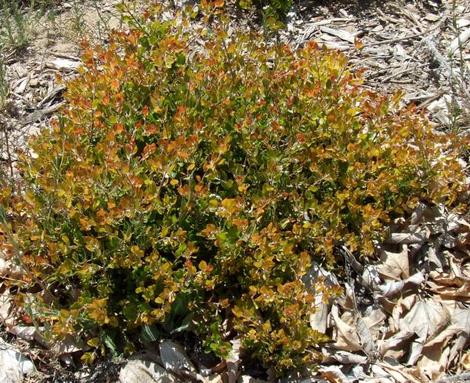
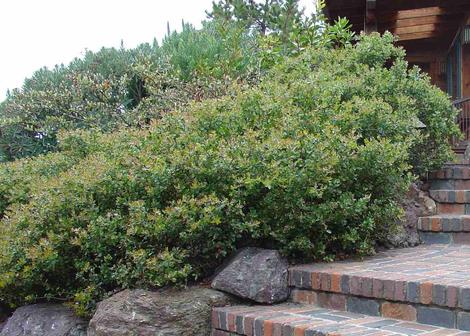
That's all for now...
